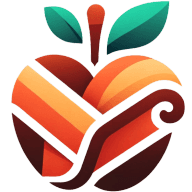Welcome to the future of food, where technology and culinary arts blend seamlessly. This blog post will take you on a journey through the latest innovations in food technology, reshaping the way we produce, prepare, and consume food. From lab-grown meat to AI-powered food scanners, we are witnessing a food revolution that promises sustainability, efficiency, and enhanced nutritional value.
Lab-Grown Meat: A Sustainable Solution
The meat industry has long been under scrutiny for its environmental impact. Enter lab-grown meat, a food technology innovation that could revolutionize the way we consume protein. By cultivating animal cells in a lab, scientists can produce meat without the need for livestock. This process significantly reduces the environmental footprint of meat production, offering a sustainable and ethical alternative to traditional farming.
Lab-grown meat not only addresses environmental concerns but also promises to improve animal welfare. By eliminating the need for animal slaughter, this technology could revolutionize the meat industry. Moreover, lab-grown meat can be engineered to be healthier than conventional meat, with lower levels of saturated fat and higher levels of beneficial nutrients.
AI and Machine Learning: Revolutionizing Food Processing
Artificial Intelligence (AI) and Machine Learning (ML) are making significant strides in the food industry. These technologies are being used to automate and optimize various aspects of food processing, from sorting and grading produce to detecting contaminants.
AI-powered machines can analyze and sort food products based on size, color, and quality at a speed and accuracy that surpasses human capabilities. This not only increases efficiency but also reduces waste, as less-than-perfect produce can be redirected for processing instead of being discarded.
Machine Learning, a subset of AI, is being used to predict food quality and shelf life. By analyzing data from past batches, ML algorithms can predict the quality of new batches, allowing for better inventory management and reducing food waste.
3D Food Printing: Personalized Nutrition at Your Fingertips
3D food printing is another exciting innovation in food technology. This process involves layering ingredients to create food items with precise nutritional content and customized shapes. From printing pizza to crafting intricate chocolate designs, 3D food printers offer a new level of personalization and creativity in food preparation.
One of the most promising applications of 3D food printing is in personalized nutrition. By adjusting the ingredients used in the printing process, it's possible to create meals tailored to an individual's dietary needs. This could be particularly beneficial for people with specific dietary restrictions or those who need to manage conditions like diabetes.
Blockchain: Ensuring Food Safety and Traceability
Blockchain technology, best known for powering cryptocurrencies, is making its way into the food industry. By providing a decentralized and immutable record of transactions, blockchain can enhance food traceability and safety.
Every step of a food product's journey, from farm to table, can be recorded on the blockchain. This provides consumers with unprecedented access to information about the origin of their food and how it was handled throughout the supply chain. In the event of a food safety issue, this traceability can help identify the source of the problem quickly and accurately.
Food Scanners: Empowering Consumers with Information
Food scanners are handheld devices that use infrared technology to analyze the chemical composition of food. By simply pointing the scanner at a food item, consumers can get instant information about its nutritional content, including calories, fat, protein, and carbohydrate content.
Food scanners empower consumers to make informed dietary choices. They can also help individuals with food allergies or intolerances avoid potentially harmful ingredients. As these devices become more advanced and accessible, they could play a significant role in promoting healthier eating habits.
Vertical Farming: Redefining Agriculture
Vertical farming is a method of growing crops in vertically stacked layers, often in controlled environments like buildings or shipping containers. This innovative approach to agriculture could help address the growing demand for food in urban areas.
Vertical farms use hydroponic systems to deliver water and nutrients directly to the plants' roots, reducing the need for soil. They also use LED lights to provide the optimal light spectrum for plant growth. This controlled environment allows for year-round crop production, regardless of weather conditions.
Vertical farming not only offers a solution to urban food production but also promotes sustainability. By growing crops indoors, vertical farms can significantly reduce water usage and eliminate the need for pesticides.
The Future of Food: A Technological Revolution
The innovations in food technology we've explored promise a future where food production is more sustainable, efficient, and personalized. As these technologies continue to evolve, they will undoubtedly reshape our relationship with food. From lab-grown meat to vertical farming, we are on the brink of a food revolution that could transform the way we feed the world.

